Managing team productivity in today’s ever-changing work landscape can be quite challenging, especially as more individuals are working remotely.
Despite these hurdles, there are numerous tools available to support teams in improving their work.
However, given the multitude of options, finding the most suitable ones for your team can be overwhelming. This guide aims to assist by showcasing some of the best team productivity tools that have been proven to effectively enhance any work environment’s productivity and success.
Before starting with the list, let’s quickly understand what exactly productivity tools are and how they help teams.
What are Team Productivity Tools?
Team productivity tools are like helpful apps that make it easier for teams to work together. They help with organizing tasks, communicating with each other, sharing files, and planning schedules.
They essentially act as digital assistants, helping to improve processes like:
- Streamlining workflows by automating repetitive tasks and centralizing information
- Task management by assigning and tracking tasks, setting deadlines, and monitoring progress
- Communication and collaboration by providing features like chat, video conferencing, and document sharing
- Project management by creating roadmaps, setting milestones, and keeping projects on track
Basically, these tools make it easier for teams to do their work, communicate, and get things done faster and better.
Top 20 Tools to Boost Team Productivity
Project Management Tools
1. Asana
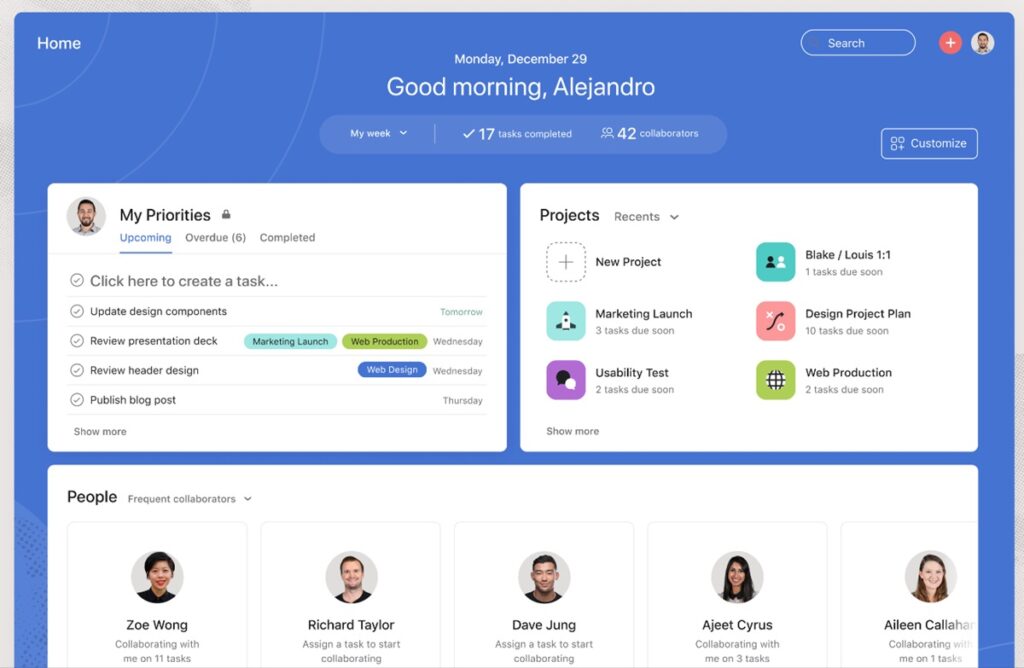
Asana is a popular project management tool best known for its ability to streamline project management with ease.
It allows teams to create tasks, assign them, set deadlines, and track progress all in one place. Users appreciate its intuitive interface and the variety of project views, including list, board, and calendar.
Asana helps improve productivity by providing clear visibility into who is doing what and by when. Users particularly like its robust integration options and automation features.
However, some find the learning curve steep and feel overwhelmed by the numerous features available. But if you don’t use any PM software, you should give Asana a shot.
2. Basecamp
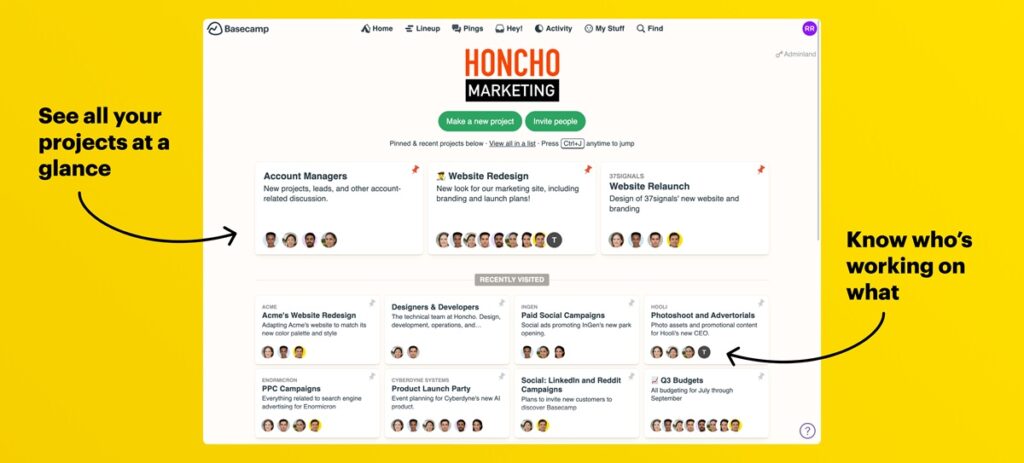
Basecamp stands out for its simplicity and all-in-one project management approach.
It combines to-dos, file sharing, messaging, schedules, and task management in a single platform. Teams benefit from its straightforward layout and ease of use, which helps keep everyone on the same page and reduces the need for multiple tools.
Reviews highlight its strong communication features and the centralized view of projects.
However, some users mention that it lacks advanced customization and reporting options, which might limit its utility for more complex projects.
Task Management & To-Do List Apps
3. Todoist
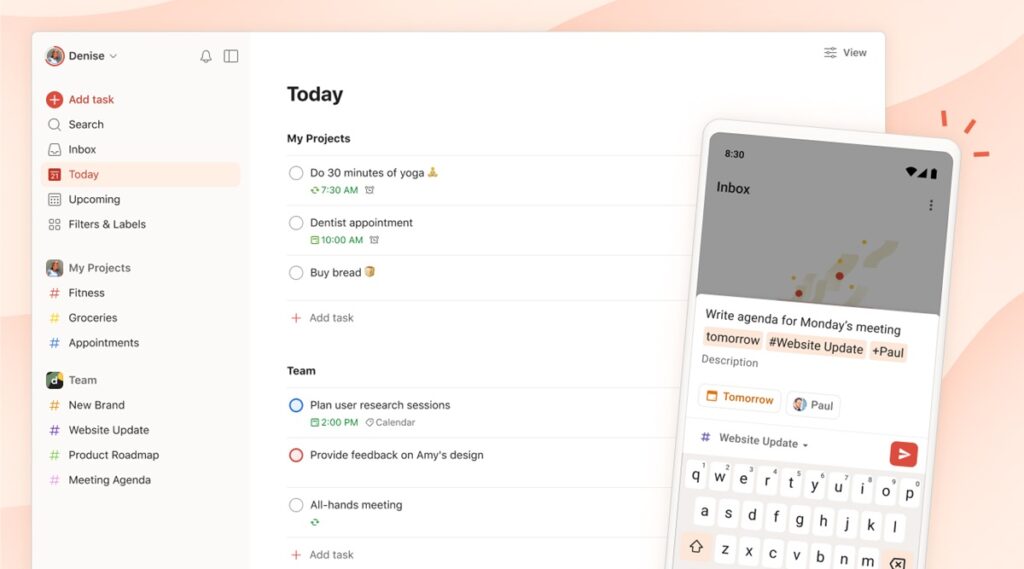
Todoist excels as a task management app known for its clean design and powerful organizational features. It helps users easily manage their to-do lists, offering task prioritization, due dates, and labels.
The app enhances productivity by keeping tasks clear and organized, allowing for easy tracking and management of daily activities. Users praise its cross-platform availability and seamless integration with other tools.
On the downside, some users find the free version limited and wish for more advanced features without having to upgrade to the premium version. But our next contender in To Do List apps offers many features in its free version.
4. SmartTask
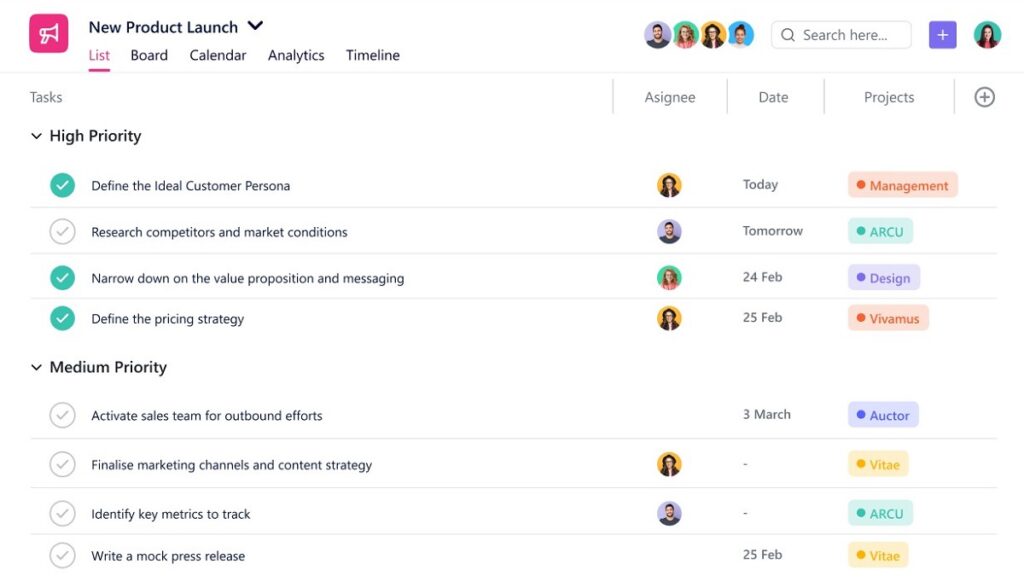
SmartTask is recognized for combining task management, project management, and CRM functionalities in one platform.
It supports task assignments, deadlines, file sharing, and team communication, making it a versatile tool for improving team productivity. Users like its simplicity and the ability to switch between different views such as list, board, and timeline.
They also appreciate the built-in time tracking and performance analytics. However, some users have mentioned occasional glitches, reporting limitations, and a desire for more third-party integrations.
Time Tracking Tools
5. Hubstaff
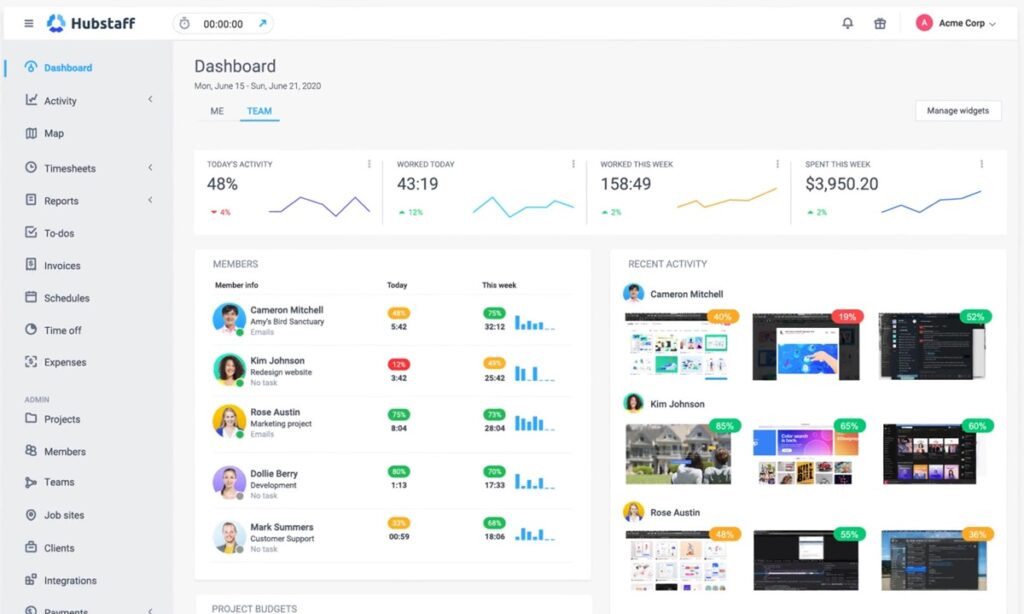
Hubstaff is best known for its comprehensive time-tracking capabilities, which help teams manage time effectively and boost productivity.
It offers features like activity monitoring, GPS tracking, and detailed reporting. Users value its ability to accurately track time spent on tasks and projects, which aids in billing and payroll management.
The tool also integrates with many project management and accounting software, enhancing its utility. Some users, however, find the user interface somewhat outdated and have experienced occasional issues with the mobile app but overall it is great for time tracking.
6. DeskTime
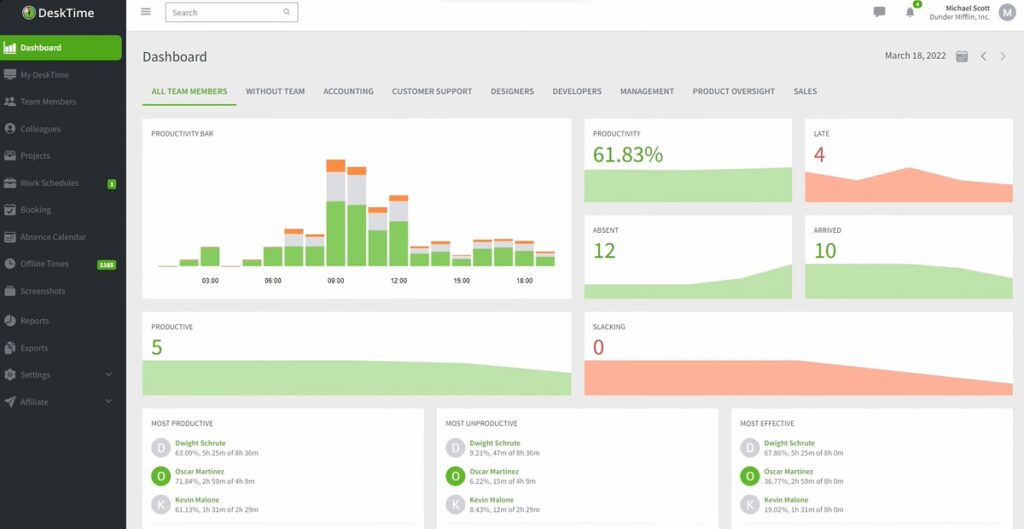
DeskTime is another tool renowned for its automatic time tracking and productivity analysis features. It helps teams understand how time is spent on various tasks, offering insights into productivity trends and identifying areas for improvement.
Users appreciate its ease of use and the detailed reports on work habits and project timelines. It also includes features like URL and app tracking, idle time detection, and screenshots.
While it’s praised for its comprehensive tracking capabilities, some users feel that the constant monitoring can be intrusive and that the user interface could be more modern and intuitive.
Communication Platforms
7. Slack
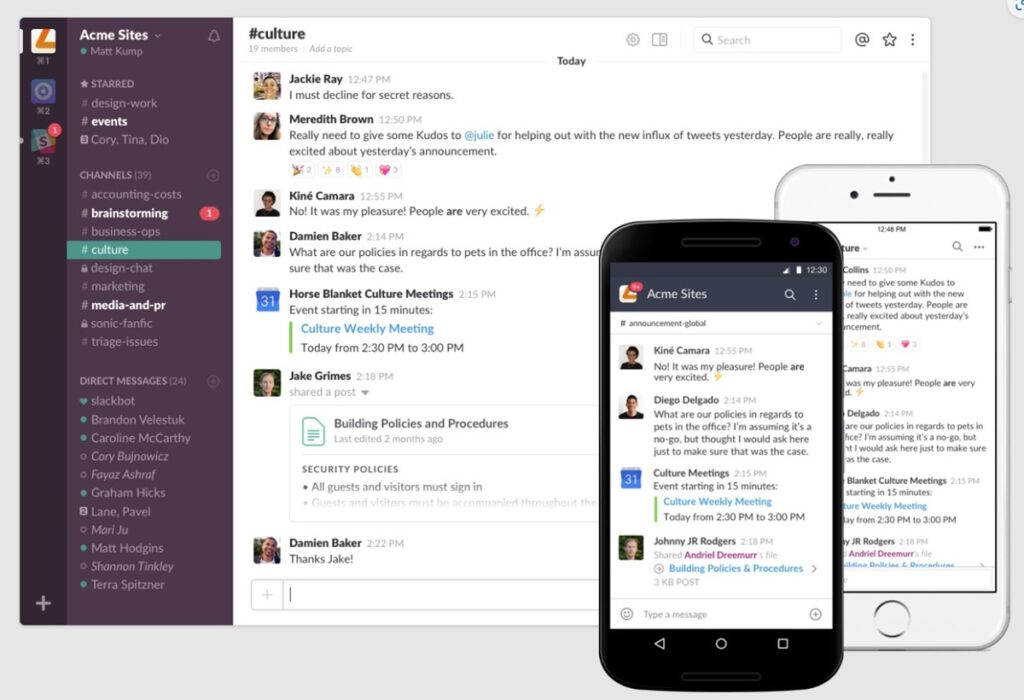
Slack is loved by teams of all sizes for its revolutionizing communication capabilities. It organizes conversations into channels, making it easy for teams to discuss projects, share files, and collaborate in real-time.
Slack’s powerful search function helps find past conversations and files quickly. Users appreciate its integration with many other tools, which centralize work in one place and boost productivity.
However, some find that the constant stream of notifications can be distracting, and the free version limits the searchable message history.
8. Zoom

We all know Zoom for high-quality video conferencing by now, especially after the pandemic.
It supports meetings, webinars, and collaboration through screen sharing and breakout rooms. Teams benefit from its reliable performance and user-friendly interface, which enhance productivity by enabling seamless remote communication.
Users praise its ease of use and robust features like virtual backgrounds and recording options. On the downside, its free version has meeting time limitations, and some users have reported security concerns as well as occasional connectivity issues during peak times.
Document Collaboration Tools
9. Google Docs
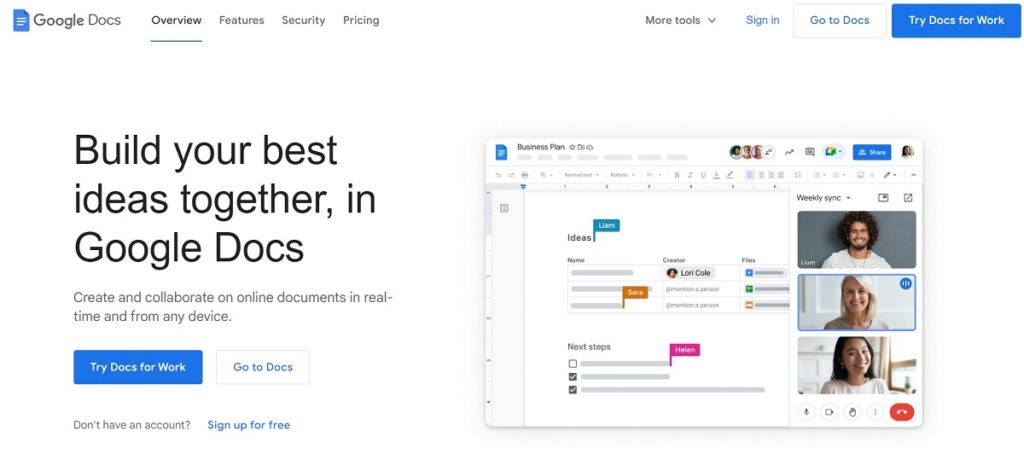
Google Docs is best known for its real-time document collaboration features. It allows multiple users to edit documents simultaneously, which improves team productivity by facilitating immediate feedback and updates.
The tool’s integration with Google Drive ensures documents are easily accessible and securely stored. Users like the automatic saving feature and the ability to comment and suggest edits.
However, some users mention occasional formatting issues and limited offline capabilities. Despite these minor drawbacks, Google Docs remains a popular choice for teams belonging to all sectors who are looking for efficient and collaborative document management.
10. Microsoft 365
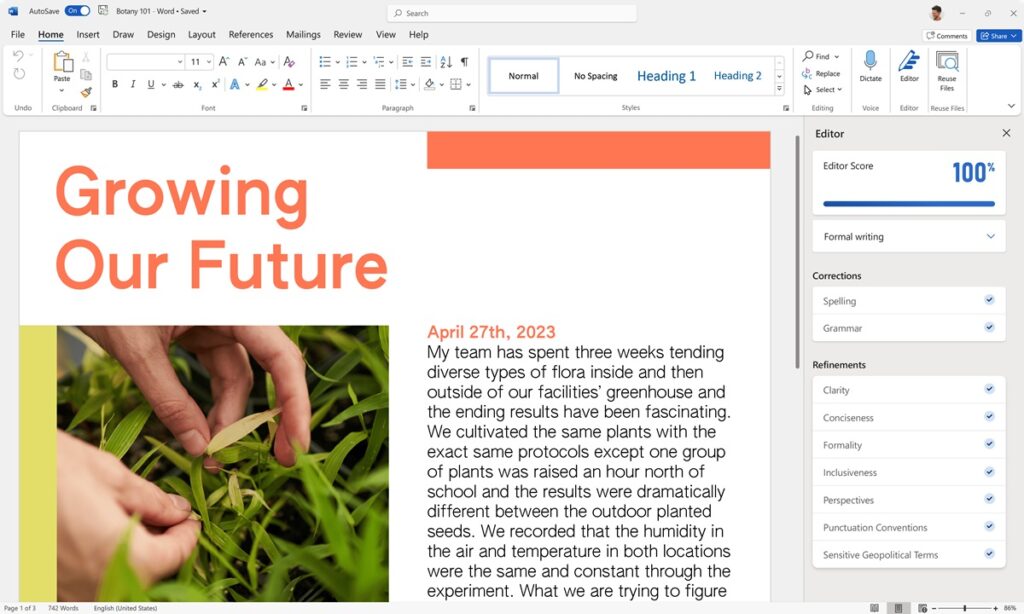
Microsoft 365 is widely recognized for its comprehensive suite that helps people get work done.
It includes the popularly known MS Word, Excel, PowerPoint, and Teams, and they all work together with a storage service called OneDrive. This makes it easy for people to share and work together on documents, spreadsheets, and presentations.
People like that they can use Microsoft 365 on different devices and that each program has a lot of helpful features. However, some think it costs too much and that some of the programs are hard to use. Overall, Microsoft 365 is a great way to help teams work together and get more done.
File Sharing and Storage Tools
11. Google Drive
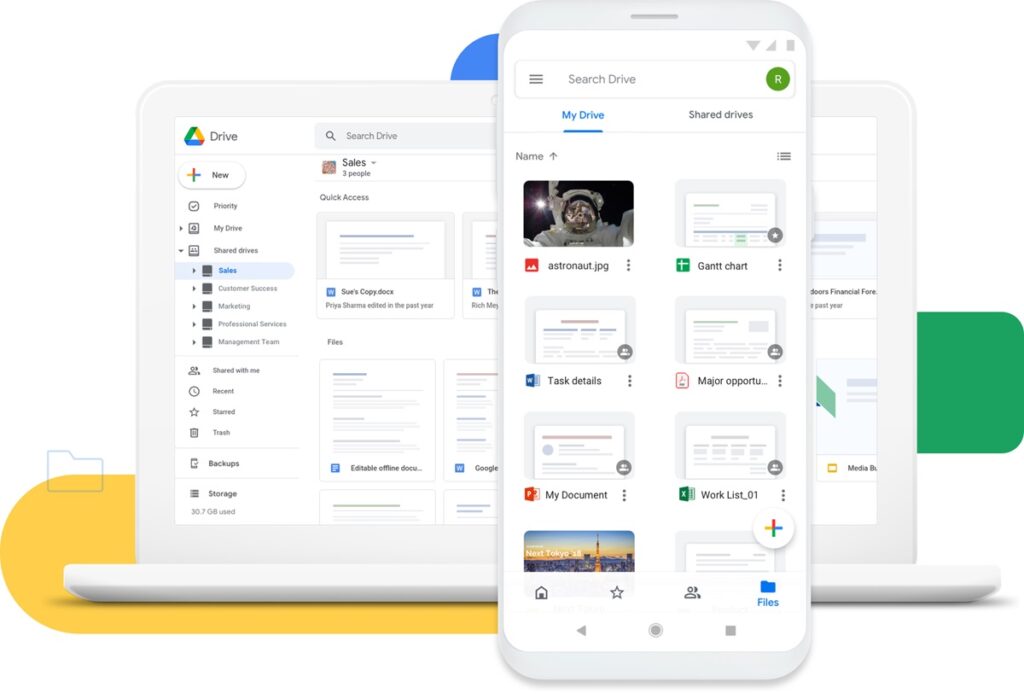
Google Drive is best known for its powerful file-sharing and storage capabilities. It provides a secure space for teams to store, share, and collaborate on files, which enhances productivity by ensuring easy access to important documents.
Users like its generous free 15 GB storage and ease of access from any device, ensuring work can be done from anywhere. Moreover, its integration with Google’s suite of tools, like Docs and Sheets, allows for easy workflow and collaboration.
However, some users have concerns about privacy and find the organization of files can get messy without proper management. Additionally, the search functionality, while powerful, sometimes retrieves too many irrelevant results, which can slow down finding specific files.
12. Dropbox
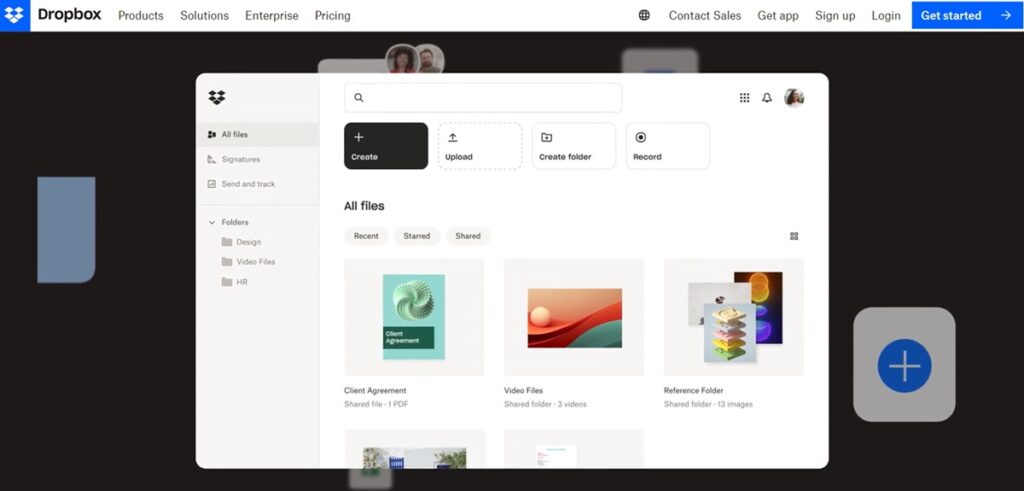
Dropbox is another famous tool that stands out for its reliable file-sharing and cloud storage services. It simplifies file organization, sharing, and collaboration with features like file requests and team folders.
Teams benefit from its easy-to-use interface and strong synchronization capabilities across devices, which help keep everyone on the same page. Users appreciate the large storage capacity and robust security features that protect sensitive information.
On the downside, some users find the pricing high compared to competitors and have experienced occasional sync delays, which can disrupt workflows.
Despite these issues, Dropbox remains a trusted choice for many businesses due to its consistent performance and user-friendly design.
Knowledge Management Tools
13. Notion
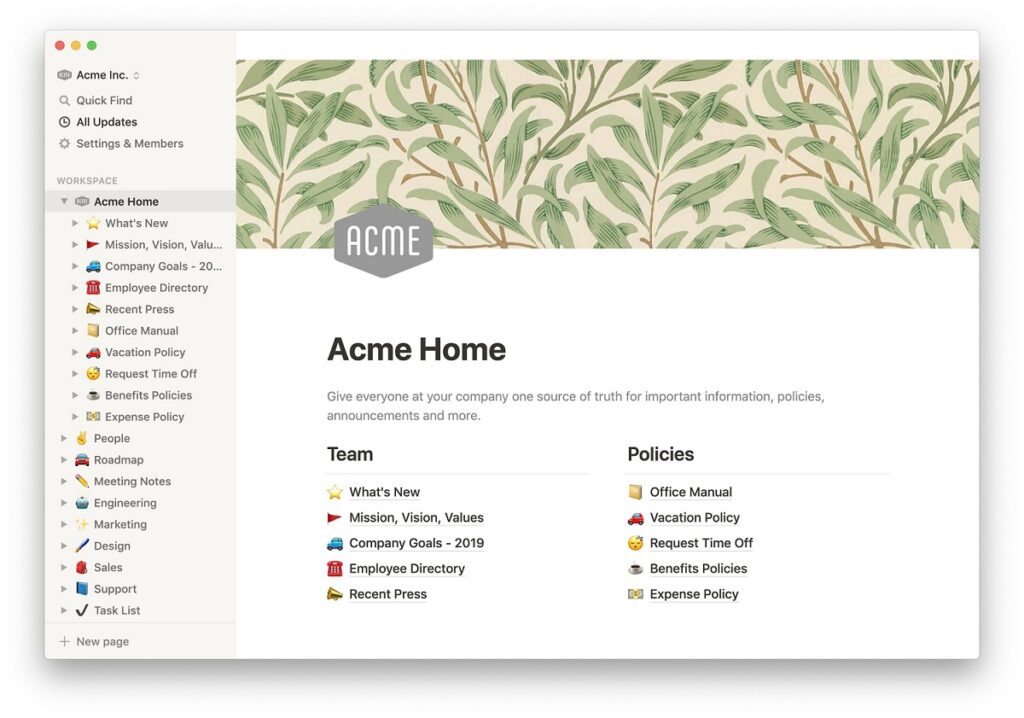
Notion is like a combination of project management and knowledge-base management systems. Notion lets you build your ideal workspace from scratch.
It helps teams create a project dashboard with to-do lists, meeting notes, Kanban boards, and embedded web clips – all on a single, customizable page. It also offers drag-and-drop functionality and a variety of content blocks (text, tables, images, videos) allowing for unparalleled flexibility.
Users love its customization options and the ability to create detailed, interconnected pages that cater to their specific needs. However, some users feel that the learning curve is steep and that it can be overwhelming for new users to set up their workspace efficiently.
14. Confluence
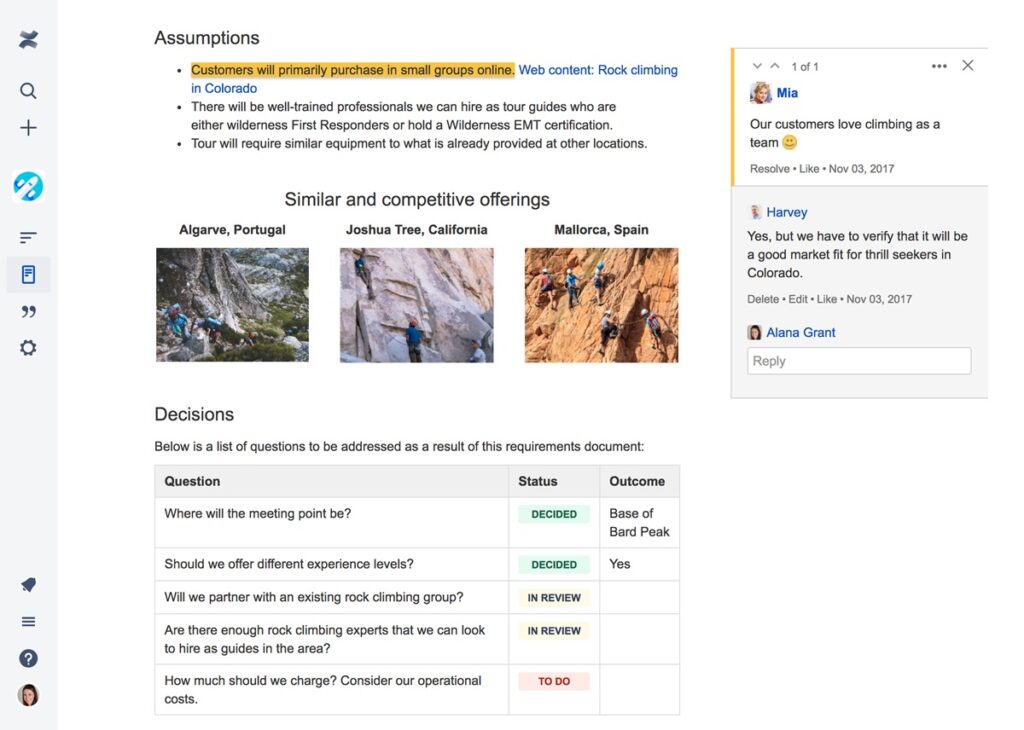
Confluence allows teams to create, share, and collaborate on documents and project plans in one place, improving productivity by ensuring everyone has access to the latest information.
Users like its integration with Jira and other Atlassian products, which streamlines project management workflows and keeps everything connected.
However, some users find the interface less intuitive and the search function not as powerful as they would like, which can make finding information more time-consuming. Also, the cost can be high for small teams, and some users report that it can be slow to load large documents.
Virtual Whiteboards
15. Miro
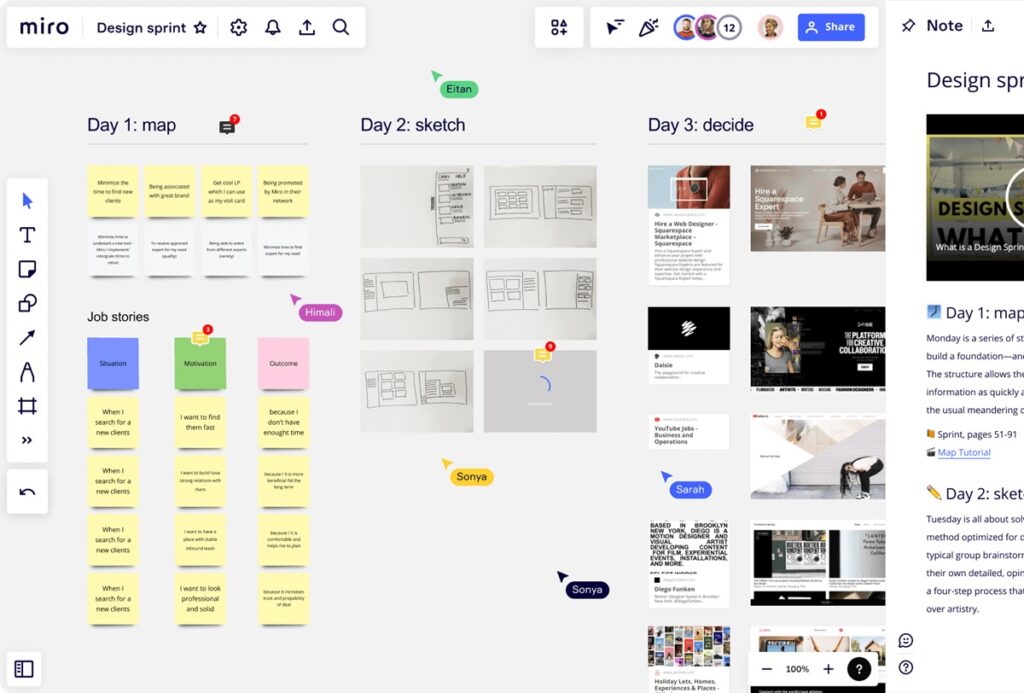
Miro is well-known for its virtual whiteboard capabilities, which support brainstorming and visual collaboration. It helps teams sketch ideas, create mind maps, and plan projects in real-time.
The tool boosts productivity and help teams kickstart the main work using the various templates offered and integration with other project management tools. Users appreciate the interactive and engaging interface, as well as the ability to collaborate simultaneously.
However, some users find the pricing high for larger teams and mention occasional performance issues with large boards, which can hinder the collaborative experience. Despite these issues, Miro remains a popular choice for teams needing a dynamic and interactive collaboration tool.
16. Mural

Like Miro, Mural also helps teams create and share visual content, such as diagrams, flowcharts, and sticky notes in real-time.
It also offers a variety of templates and easy-to-use features that support creative workflows. Users like the intuitive interface and the ability to collaborate remotely, making it a valuable tool for distributed teams.
However, some users have pointed out that the tool can lag with complex murals.
Workflow Automation Tools
17. Zapier

Zapier is best known for automating repetitive tasks between different web applications, acting as a central hub for connecting various tools and streamlining workflows.
One of Zapier’s core functionalities is its workflow automation tools, where users can build “Zaps”—automated processes triggered by specific events within one application.
For example, a Zap can automatically add a new lead from a web form to a CRM system or send a notification to a team chat whenever a new file is uploaded to cloud storage.
Users appreciate Zapier’s visual editor, which uses drag-and-drop functionality, making it accessible for those with minimal technical expertise. While users value its ease of use and extensive integration capabilities, some find the cost can add up for teams requiring numerous Zaps and advanced features.
18. Kissflow
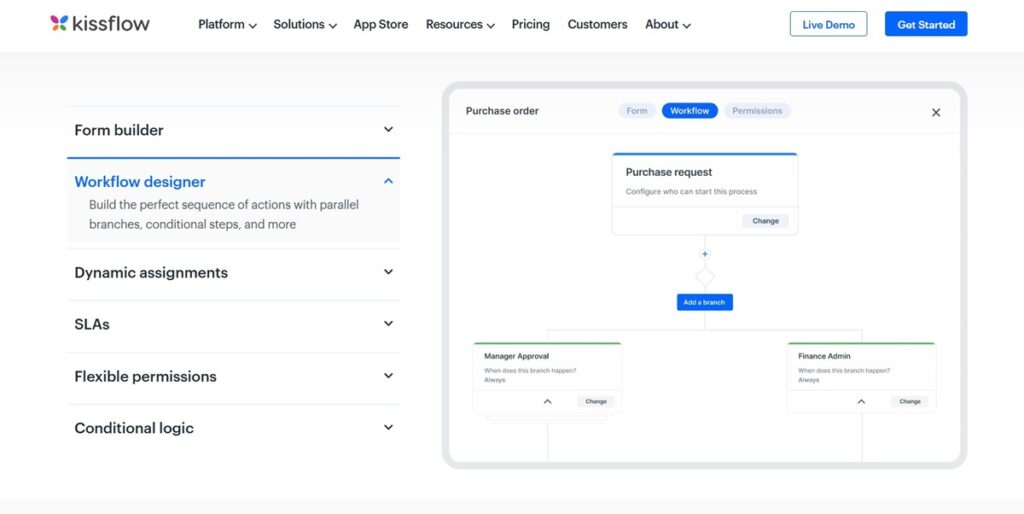
Kissflow too is known for its comprehensive process automation capabilities, designed to simplify and streamline workflows.
It offers a no-code platform that allows teams to automate routine tasks and manage workflows without needing advanced technical skills. Users can create custom applications for approval workflows, project management, and HR onboarding.
Kissflow’s visual interface makes it easy to design and modify workflows, enhancing productivity by reducing manual effort and errors. Users appreciate the platform’s flexibility and wide range of integration options. However, sometimes smaller teams find it expensive, and the initial setup can be time-consuming.
Scheduling Tools
19. Calendly

Calendly helps small business owners and marketing teams stay on top of their goals by eliminating the distraction of booking meetings and freeing up more time to work.
The scheduling tool links up with a team’s existing calendar and automatically blocks out times when they have other commitments, eliminating the back-and-forth of email requests. Calendly automates the scheduling process, allowing users to set their availability and share personalized scheduling links.
Users appreciate the automated reminders that keep teams on track and ensure no meetings are missed. However, some find the free version limited in features and would like more customization options.
20. Google Calendar
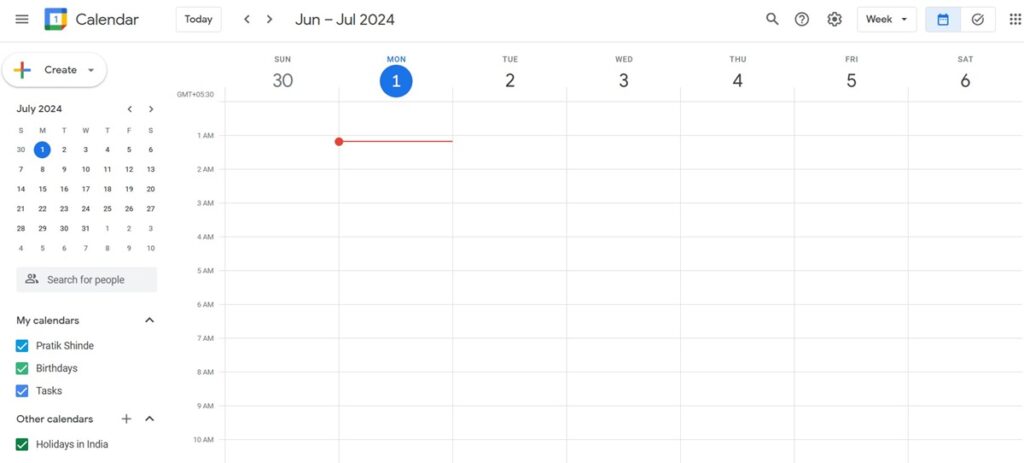
Google Calendar, while primarily a general calendar tool, offers functionalities that streamline the appointment booking process. Though it lacks some robust automation features of dedicated scheduling software, it efficiently organizes and manages appointments.
Users can create recurring meetings, setting up regular appointments at specified intervals, eliminating the need to manually input repetitive events. Additionally, clients can directly book appointments based on the user’s shared calendar availability, reducing the need for extensive back-and-forth communication.
The recent introduction of the Appointment Schedule feature under paid plans simplifies the booking process. Despite some limitations, Google Calendar remains a reliable tool for effective time management and scheduling.
Boost Team Productivity with These Essential Tools
Choosing the right team productivity tools is crucial for navigating the complexities of modern work environments and ensuring streamlined workflows, whether remote or in-office.
From effective communication platforms to robust project management software, each tool plays a critical role in facilitating collaboration, tracking progress, and achieving goals.
By integrating these essential tools into your daily operations, you can create a more efficient, cohesive, and motivated team. Continuously explore and adopt innovative solutions that meet your team’s unique needs better.
Also check out similar posts –
The Ultimate Guide to Effective Remote Collaboration in 2024
Workplace Etiquette: Everything You Need to Know in 2024
A Practical Guide to Employee Communication in 2024

